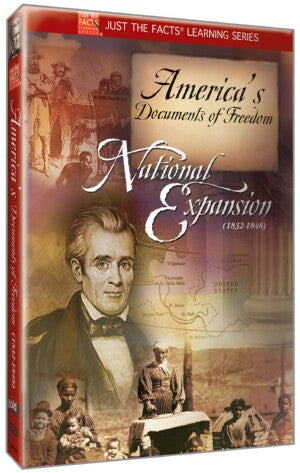Just the Facts: America's Documents of Freedom 1832-1848
National Expansion (1832-1848) American democracy has a lineage of written records that we can trace to show the development of our nation, and how each document builds on those before it to make our foundation of freedom stronger. In this video, we look at the documents conceived in a period during which our national boundaries became more clearly defined. Educators from noted American universities share their insights on: South Carolina s Ordinance of Nullification (1832), The Constitution of the American Anti-Slavery Society (1833), The Webster-Ashburton Treaty (1842), Oregon Treaty (1846) and The Treaty of Guadalupe Hidalgo (1848)South Carolina's Ordinance of Nullification (1832) --åÊ President Andrew Jackson issued this ordinance, along with his Proclamation Regarding Nullification and Proclamation of South Carolina (all in 1832), to nullify a law passed by the U.S. Congress imposing duties on foreign imports to South Carolina.åÊ Jackson felt justified in opposing laws he disagreed with. åÊThe Constitution of the American Anti-Slavery SocietyåÊ (1833)åÊ -- This constitution was adopted at the founding convention of the American Anti-Slavery Society in Philadelphia.åÊ It borrows from the Declaration of Independence the concept that all men are created equal.åÊ It also charges that slavery is "...contrary to the principles of justice."The Webster-Ashburton Treaty (1842) --This treaty with England settled the boundary question between Maine and Canada. It also defined the U.S.-Canadian border from Maine to the Minnesota territory. Oregon Treaty (1846)åÊ -- This treaty extended the 49th parallel boundary from the Rockies to Puget Sound on America‰۪s Pacific coast, confirming U.S. territory in the great Northwest. The Treaty of Guadalupe Hidalgo (1848)åÊ --åÊ This treaty ended the Mexican War on terms dictated by the United States. It granted the U.S. a huge amount of territory, including much of Texas and many natural resources.åÊ Even today, the Mexican War remains an important part of the Mexican consciousness.åÊ As part of the treaty, Mexico was paid $15 million for the California Territory.






